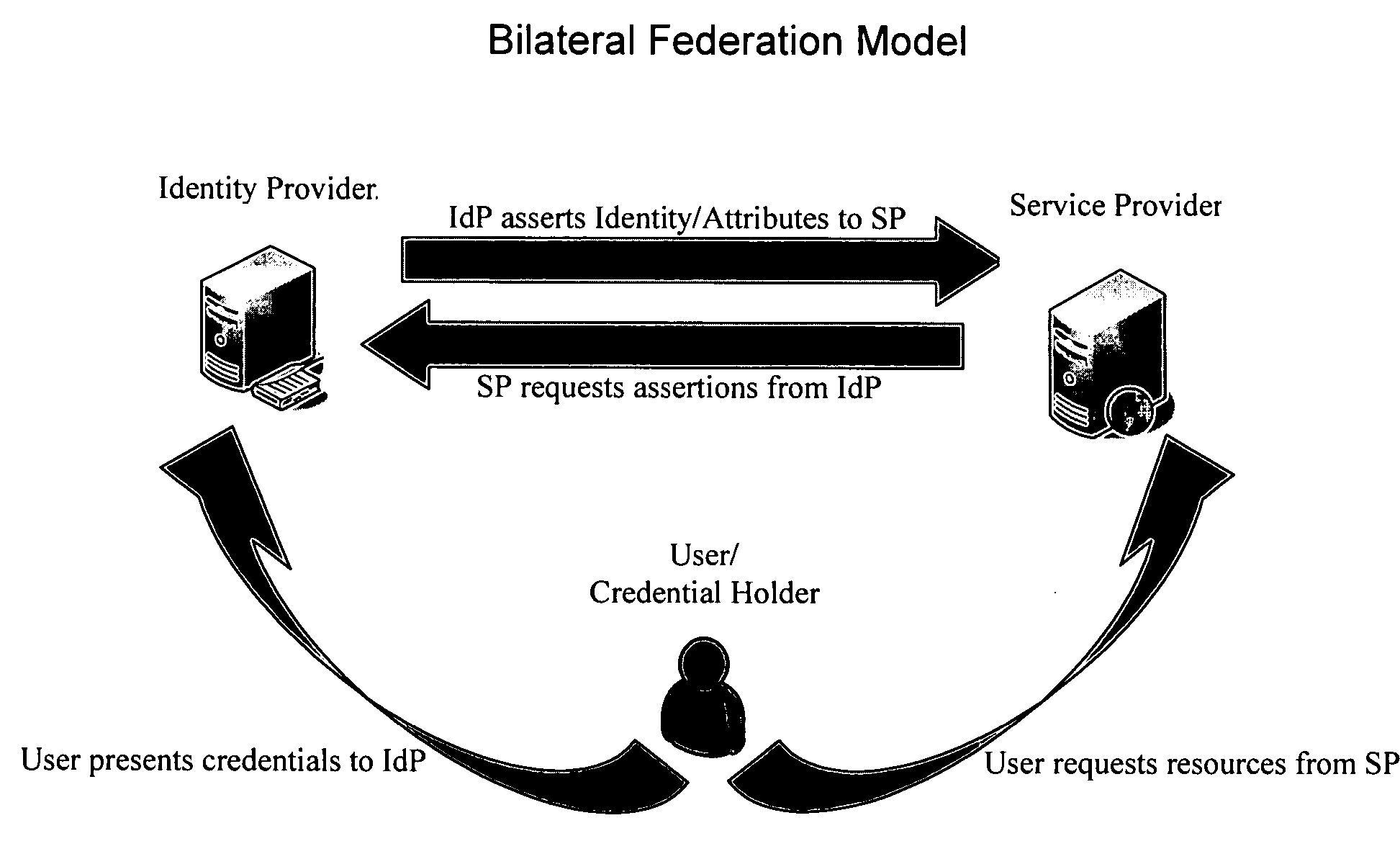Systems and methods for enabling trust in a federated collaboration
a technology of federated collaboration and trust, applied in the field of systems and methods for enabling trust in federated collaboration, can solve the problems of unauthorized parties' invading of information residing on unsecured computers connected to the internet, undesirable access by unauthorized entities to information belonging to others, and inability to secure communication,
- Summary
- Abstract
- Description
- Claims
- Application Information
AI Technical Summary
Benefits of technology
Problems solved by technology
Method used
Image
Examples
Embodiment Construction
[0043] Reference will now be made in detail to exemplary embodiments of the invention, examples of which are illustrated in the accompanying drawings. Wherever possible, the same reference numbers will be used throughout the drawings to refer to the same or like parts.
[0044] Methods and systems consistent with the present invention provide a trusted-third-party-hubbed, multilateral, explicit system of trust among a community of interest also known as a federation. FIG. 3A is a depiction of a federation architecture consistent with an embodiment of the present invention. A trusted third party 300 enables transitive trust among member organizations 305 within the federation. Transitive trust may be enabled through the development of policies and procedures by trusted third party 300 and execution of legally binding agreements, setting out the terms of federation membership, between federation members 305 and trusted third party 300. Because trusted third party 300 may audit and obtai...
PUM
 Login to View More
Login to View More Abstract
Description
Claims
Application Information
 Login to View More
Login to View More - R&D
- Intellectual Property
- Life Sciences
- Materials
- Tech Scout
- Unparalleled Data Quality
- Higher Quality Content
- 60% Fewer Hallucinations
Browse by: Latest US Patents, China's latest patents, Technical Efficacy Thesaurus, Application Domain, Technology Topic, Popular Technical Reports.
© 2025 PatSnap. All rights reserved.Legal|Privacy policy|Modern Slavery Act Transparency Statement|Sitemap|About US| Contact US: help@patsnap.com



